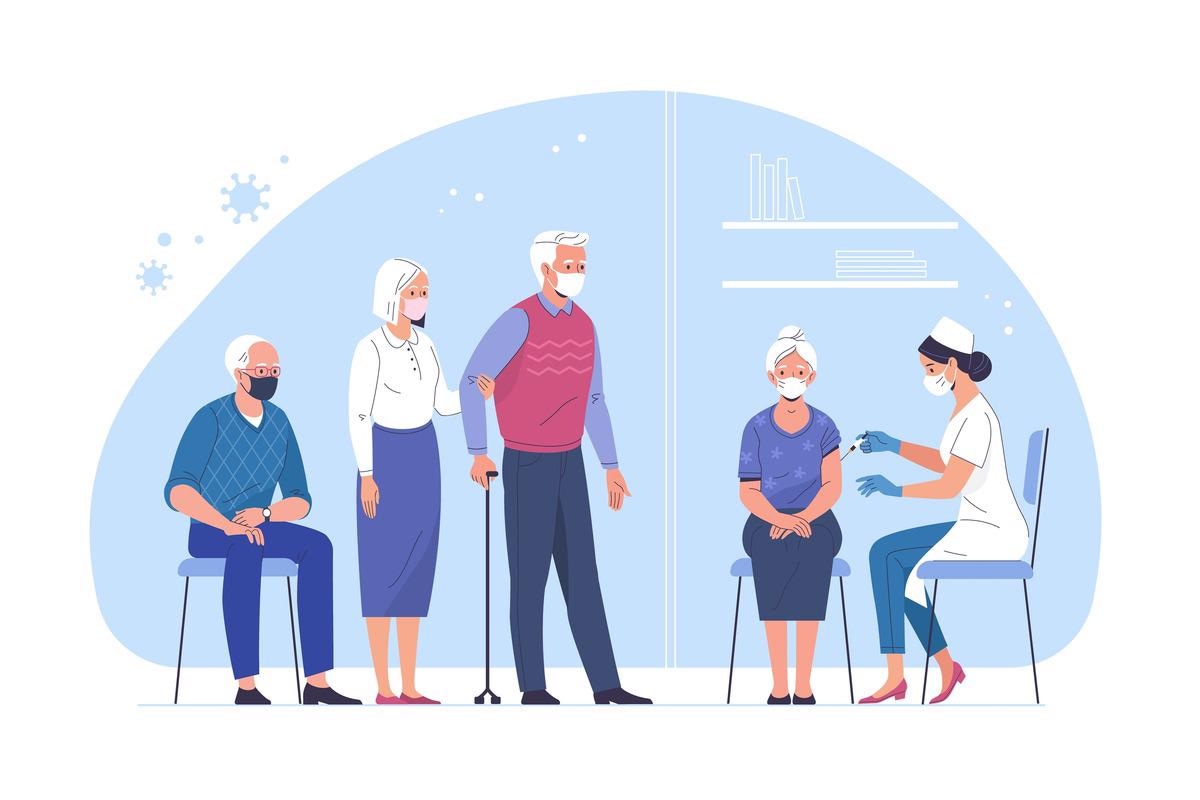In a recent study posted to Preprints with The Lancet*, researchers evaluated the antibody responses in an older cohort following coronavirus disease 2019 (COVID-19) vaccination and compared them to a younger cohort.
 Study: Safety and Efficacy of Preventative COVID Vaccines: The StopCoV Study. Image Credit: Nadya_Art/Shutterstock
Study: Safety and Efficacy of Preventative COVID Vaccines: The StopCoV Study. Image Credit: Nadya_Art/Shutterstock

 *Important notice: Preprints with The Lancet publishes preliminary scientific reports that are not peer-reviewed and, therefore, should not be regarded as conclusive, guide clinical practice/health-related behavior, or treated as established information.
*Important notice: Preprints with The Lancet publishes preliminary scientific reports that are not peer-reviewed and, therefore, should not be regarded as conclusive, guide clinical practice/health-related behavior, or treated as established information.
Background
Clinical trials and population-based studies of COVID-19 vaccines reveal exceptional safety and short-term efficacy. While clinical trials included older people aged over 70 years, the COVID-19 mortality rate was higher, particularly in those with comorbid conditions. In Canada, the interval between two vaccine doses was extended to allow immunization of more people, which raised concerns regarding the efficacy of vaccines. While studies noted the benefits of extended duration, little is known about that in the older population.
The study
The current study assessed the safety and antibody responses induced by COVID-19 vaccines in the older population relative to younger persons. The authors obtained demographic and health data from self-administered questionnaires; vaccination-related data such as date of administration, vaccine brand, local and systemic adverse events were collected in electronic diaries. Besides, monthly questionnaires were administered to capture persistent adverse events, reinfections, and booster vaccination data.
Participants were asked to self-provide dried blood spot (DBS) samples on Whatman 903 cards at different time points. First specimen seven days after initial vaccination, second after three weeks of first vaccine dose, third after two weeks of second vaccination, and every 12 weeks thereafter. An additional sample was collected before the second vaccination if the dosing interval was extended.
Enzyme-linked immunosorbent assay was conducted for antibodies, eluted from the DBS cards, against SARS-CoV-2’s spike (S) trimer, receptor-binding domain (RBD), and nucleocapsid (N), and total immunoglobulin G (IgG) antibodies were quantified.
Findings
The study enrolled about 1286 participants between May 17th – July 31st, 2021, of which 911 were older individuals, and the remaining were younger individuals. The final number of participants was 1192 as some were lost during follow-up, withdrew consent, or were ineligible.
A significant proportion of the participants were vaccinated with either mRNA-1273 or BNT162b2 vaccines. Both cohorts comprised 17% of individuals who received one dose of the two mRNA vaccines each. About 4% of older participants received one mRNA vaccine dose and one ChAdOx1 dose, compared to 11.5% in the younger group. The interval between the two vaccinations was 11 median weeks among the older population and eight weeks for the younger people.
After the first vaccination, the most common adverse event was pain around the injection site, followed by fatigue and malaise. Younger people had higher odds of experiencing at least one adverse event with a moderate or severe degree when compared to older participants. Interestingly, adverse events were more likely after second vaccination with mRNA-1273 vaccine than with BNT162b2 vaccine.
Before the second vaccination, 29 individuals were positive for anti-N antibodies indicating prior infection, and among them, 10 participants reported previous SARS-CoV-2 infection. Besides, anti-N antibodies were detected in 16 participants at different time points after the second vaccination. Three participants revealed COVID-19 diagnosis during monthly questionnaires.
In the older population, the proportion of those with positive S IgG antibodies increased from 73.5% (before the first dose) to 98.5% (two weeks post-second vaccination). Those with RBD IgG antibodies increased from 45% (before the first dose) to 98% (two weeks after the second dose). The proportion with positive RBD antibodies was 96% at 12 weeks post-second vaccine dose, which declined to 93% by 24 weeks post-second dose.
The positive antibody ratios increased among the younger cohort after the second dose. All younger people had positive S IgG antibodies after 12 weeks of the second vaccination. Similarly, RBD IgG antibodies were observed in all participants except one. Individuals from both cohorts receiving two mRNA-1273 doses showed higher RBD antibody ratios at two and 24 weeks after the second vaccination than those receiving one dose each of two mRNA vaccines.
RBD antibody levels in both cohorts were lower before the second dose if the vaccination interval was longer; this effect was insignificant at 12 weeks after the second dose. Surprisingly, at 24 weeks, RBD antibody levels were slightly increased in the older population but not in the younger people.
Conclusions
The study revealed that the older population had a lower antibody response than younger people. Positive antibody responses before the second dose were observed in 83% younger subjects and only 43% older people; albeit after the double-dose vaccination, nearly all participants had positive responses.
The likely explanation for the higher antibody ratios observed in the mRNA-1273 recipients could be its larger antigen quantity than BNT162b2. While the optimal interval between two doses is still unclear, a longer duration was advantageous without harmful effects. The study findings indicated the need for additional vaccinations among the elderly population.

 *Important notice: Preprints with The Lancet publishes preliminary scientific reports that are not peer-reviewed and, therefore, should not be regarded as conclusive, guide clinical practice/health-related behavior, or treated as established information.
*Important notice: Preprints with The Lancet publishes preliminary scientific reports that are not peer-reviewed and, therefore, should not be regarded as conclusive, guide clinical practice/health-related behavior, or treated as established information.